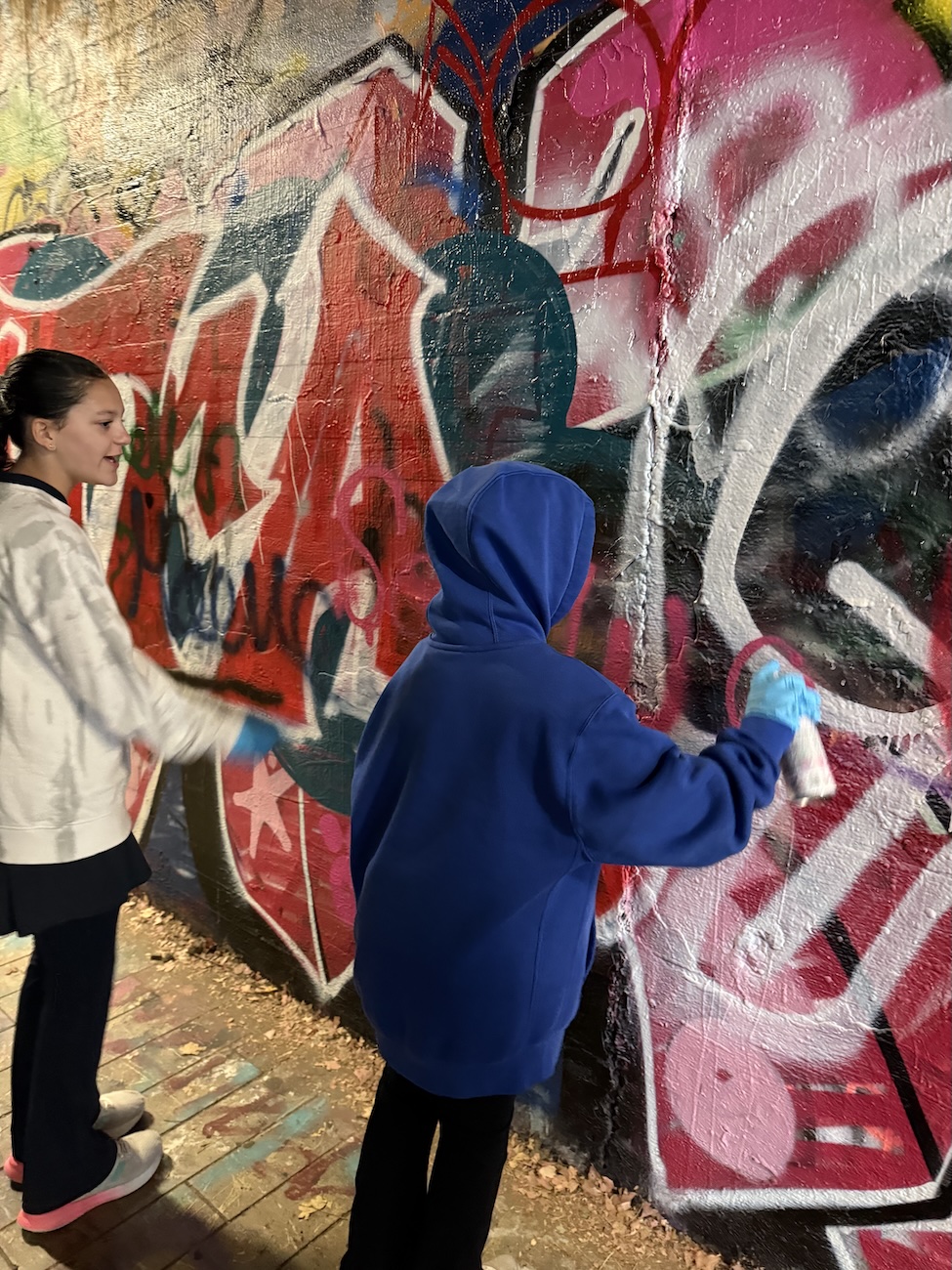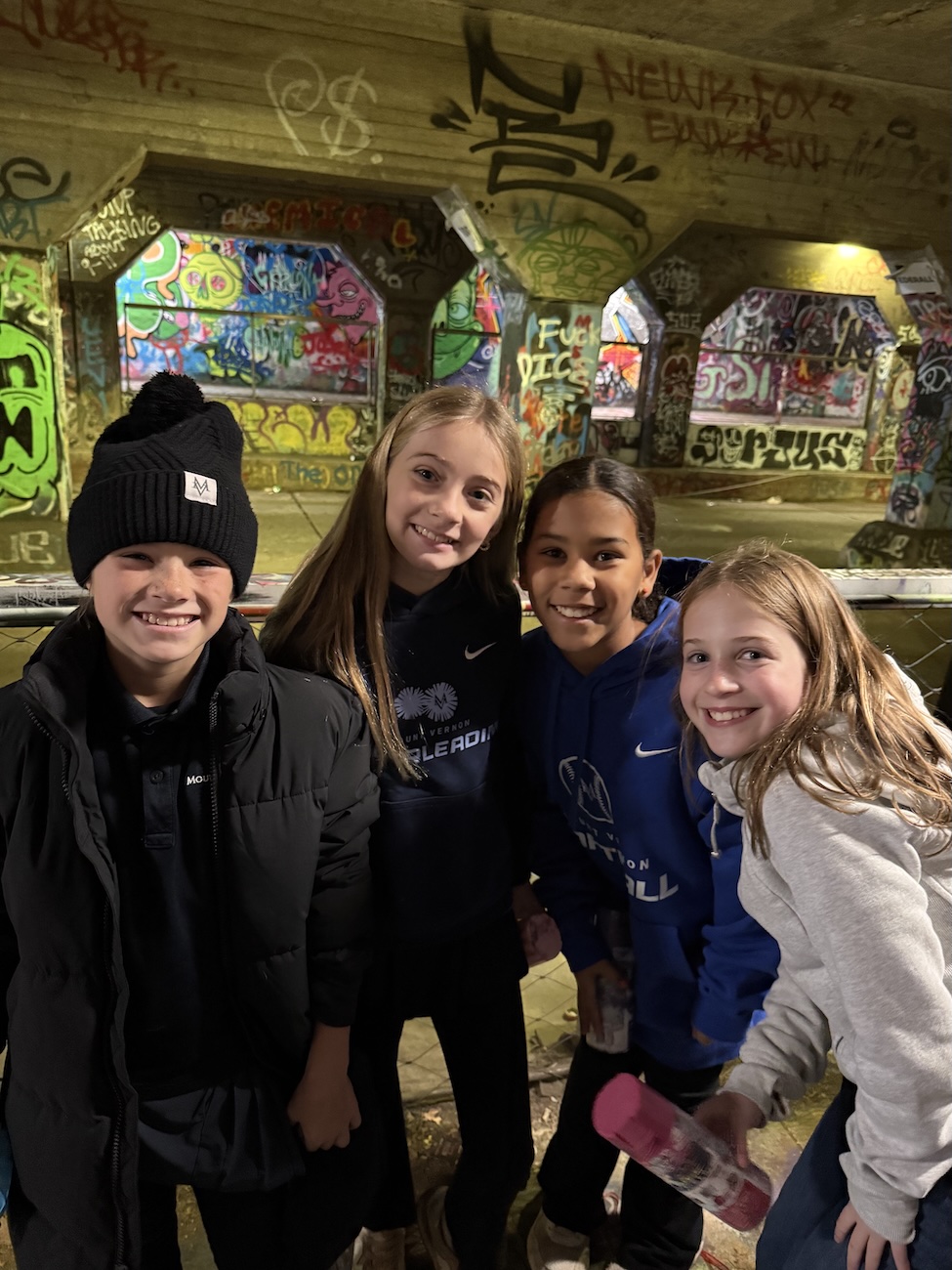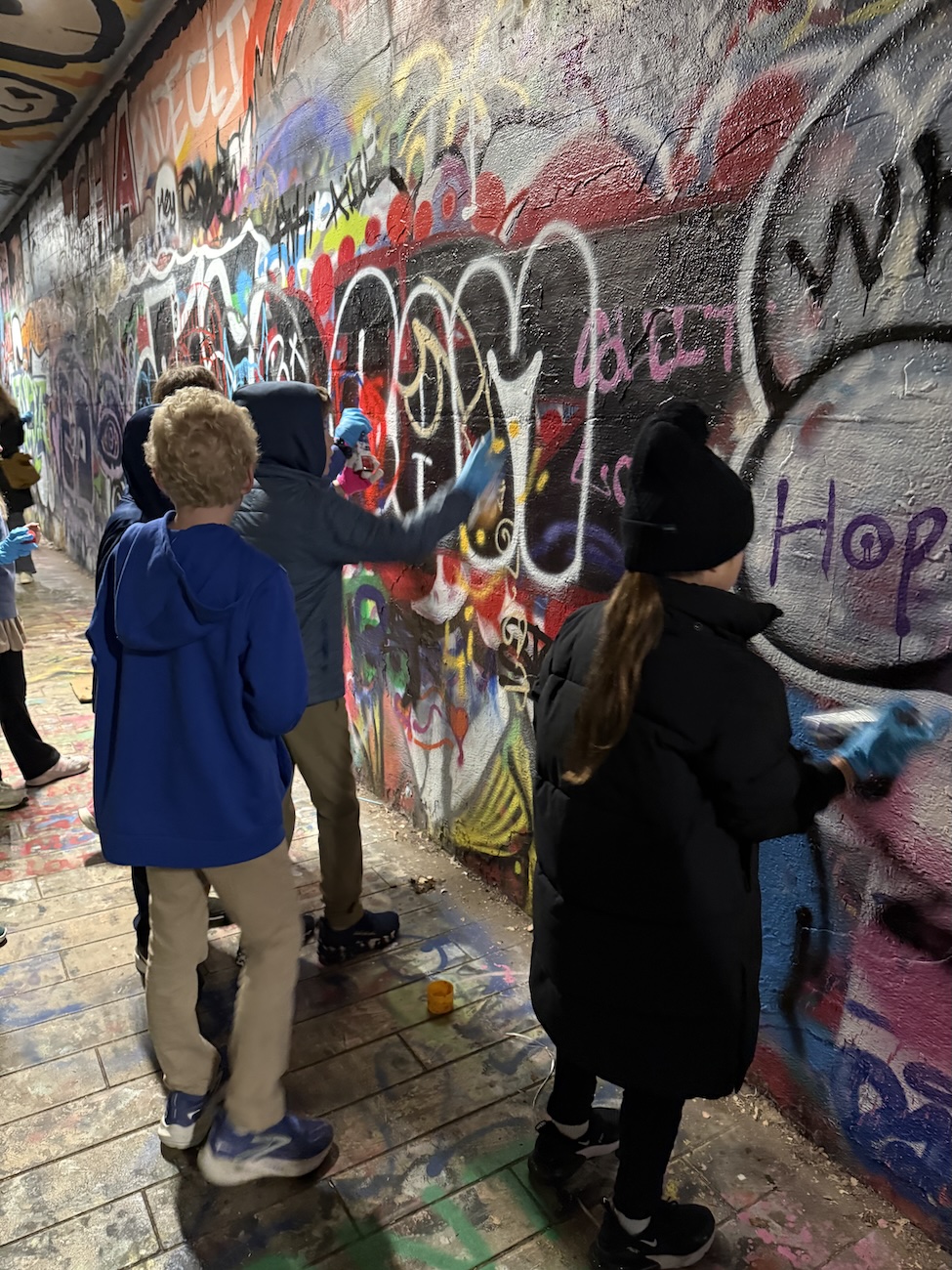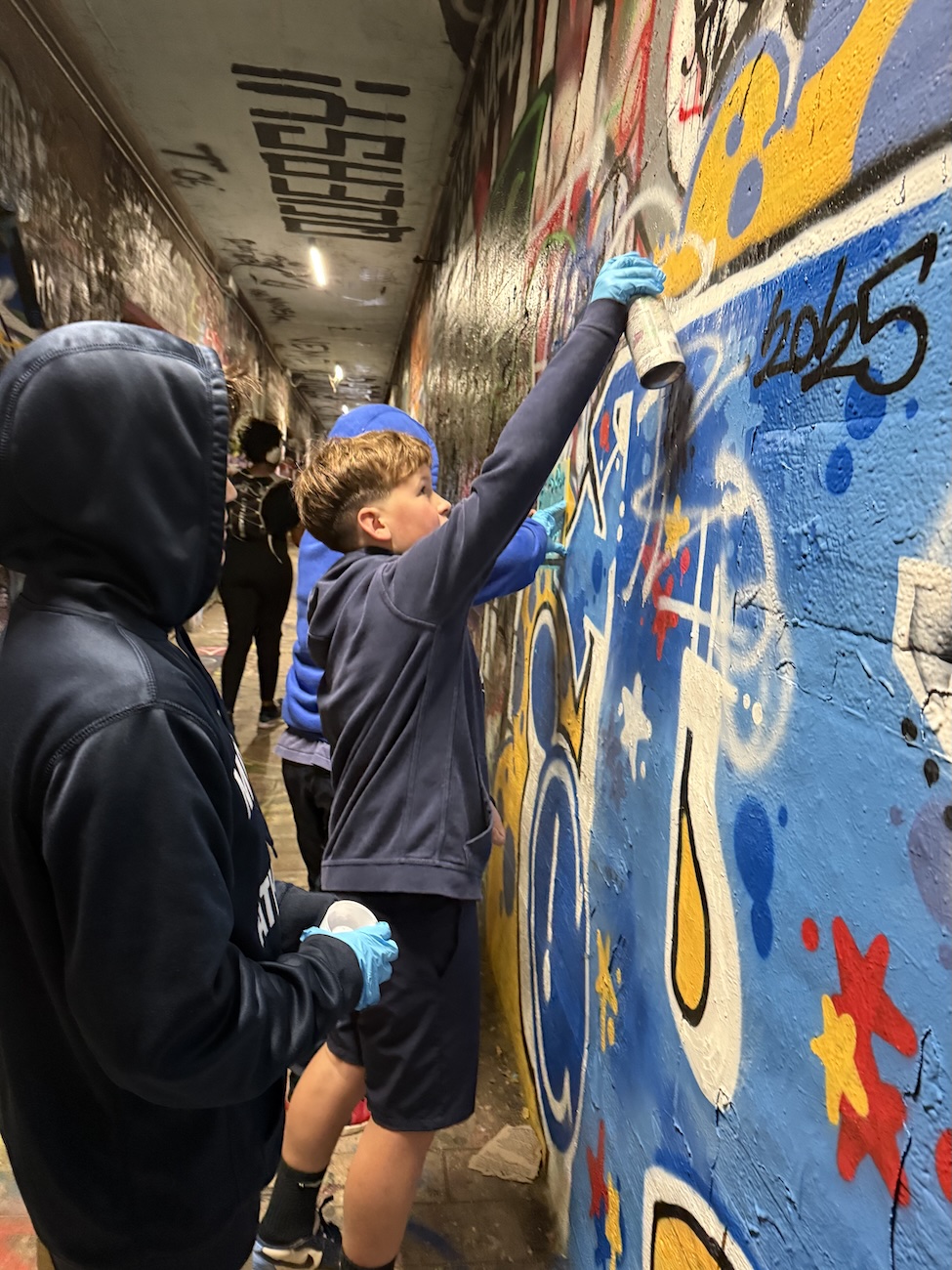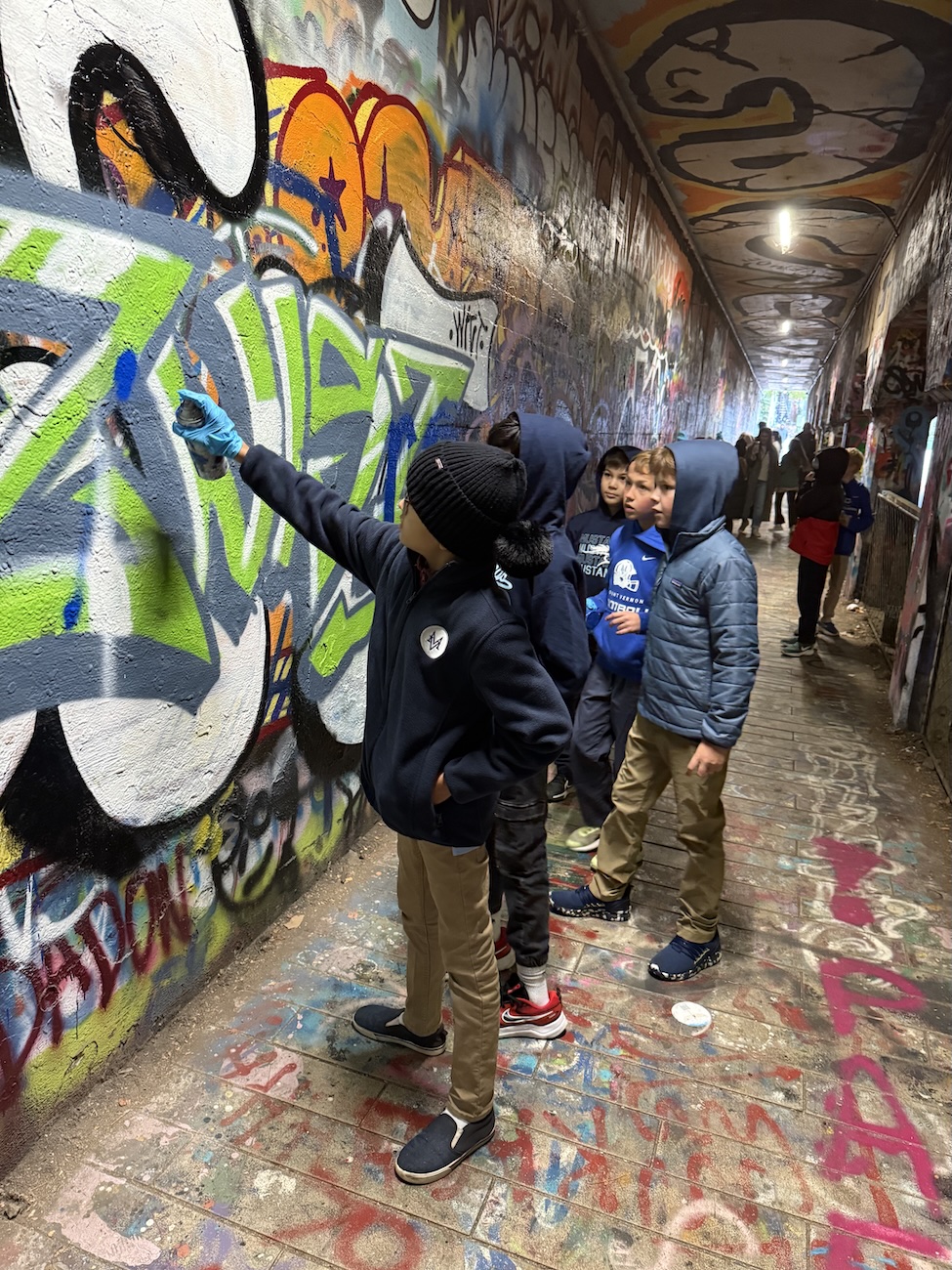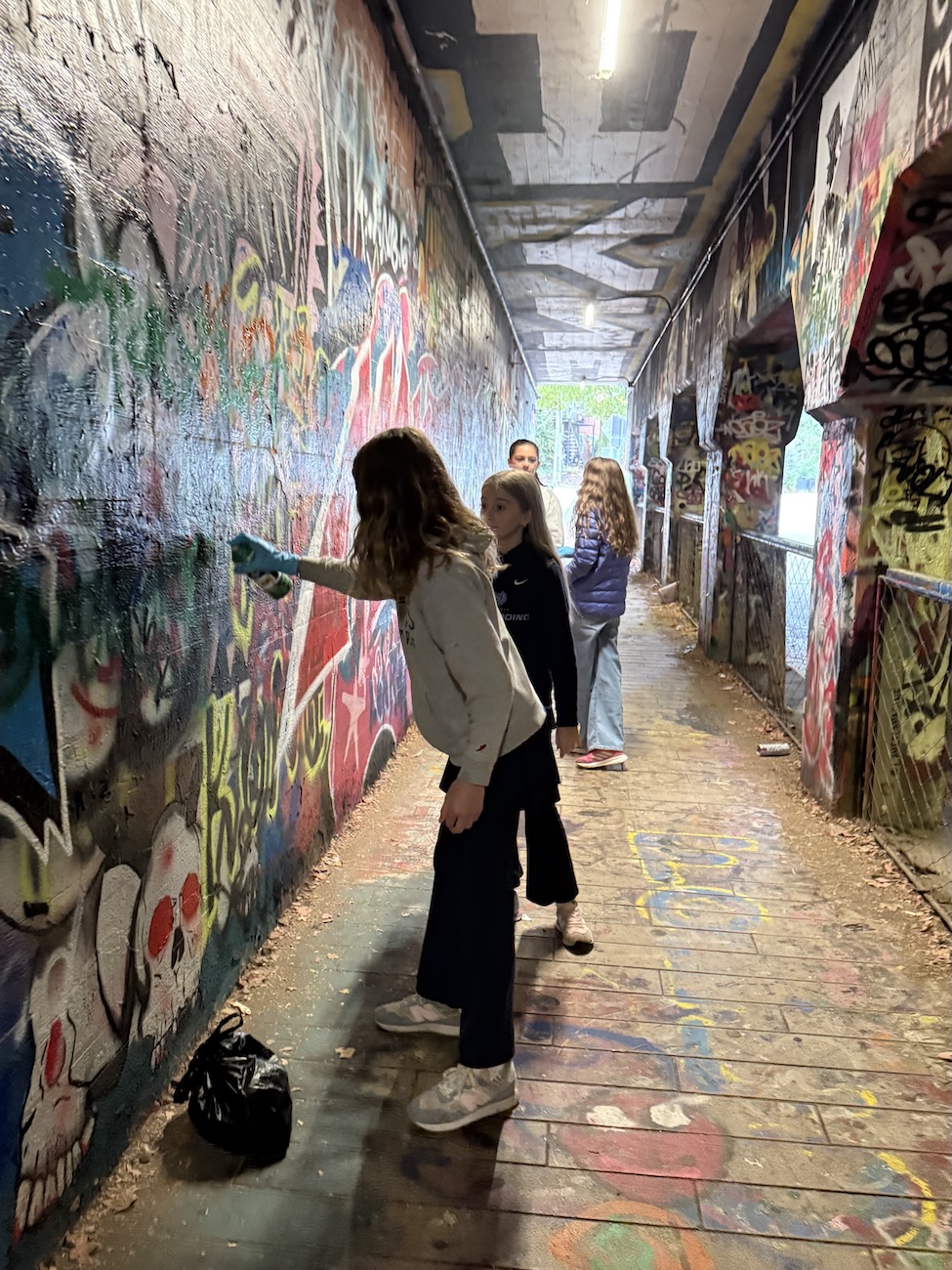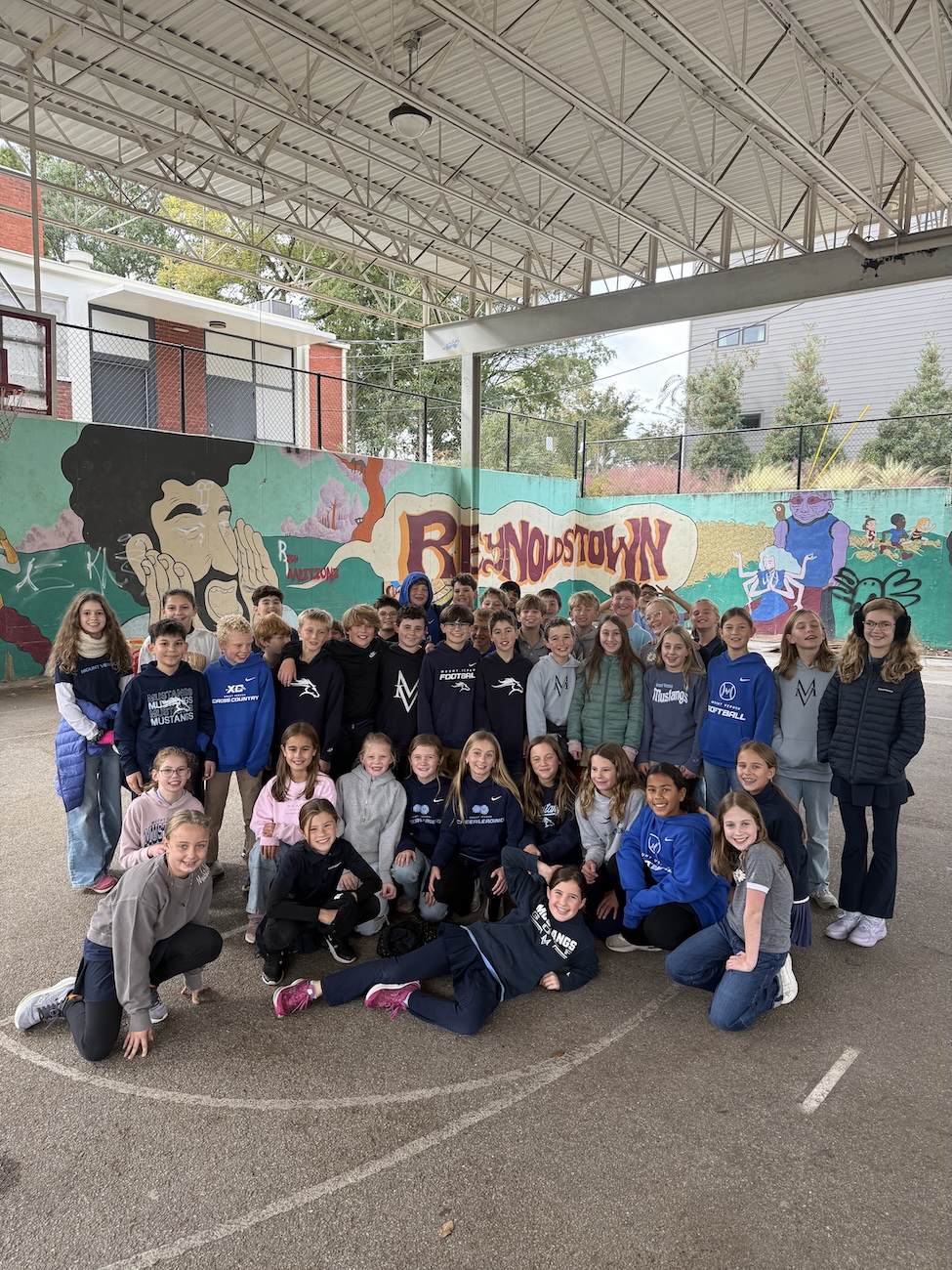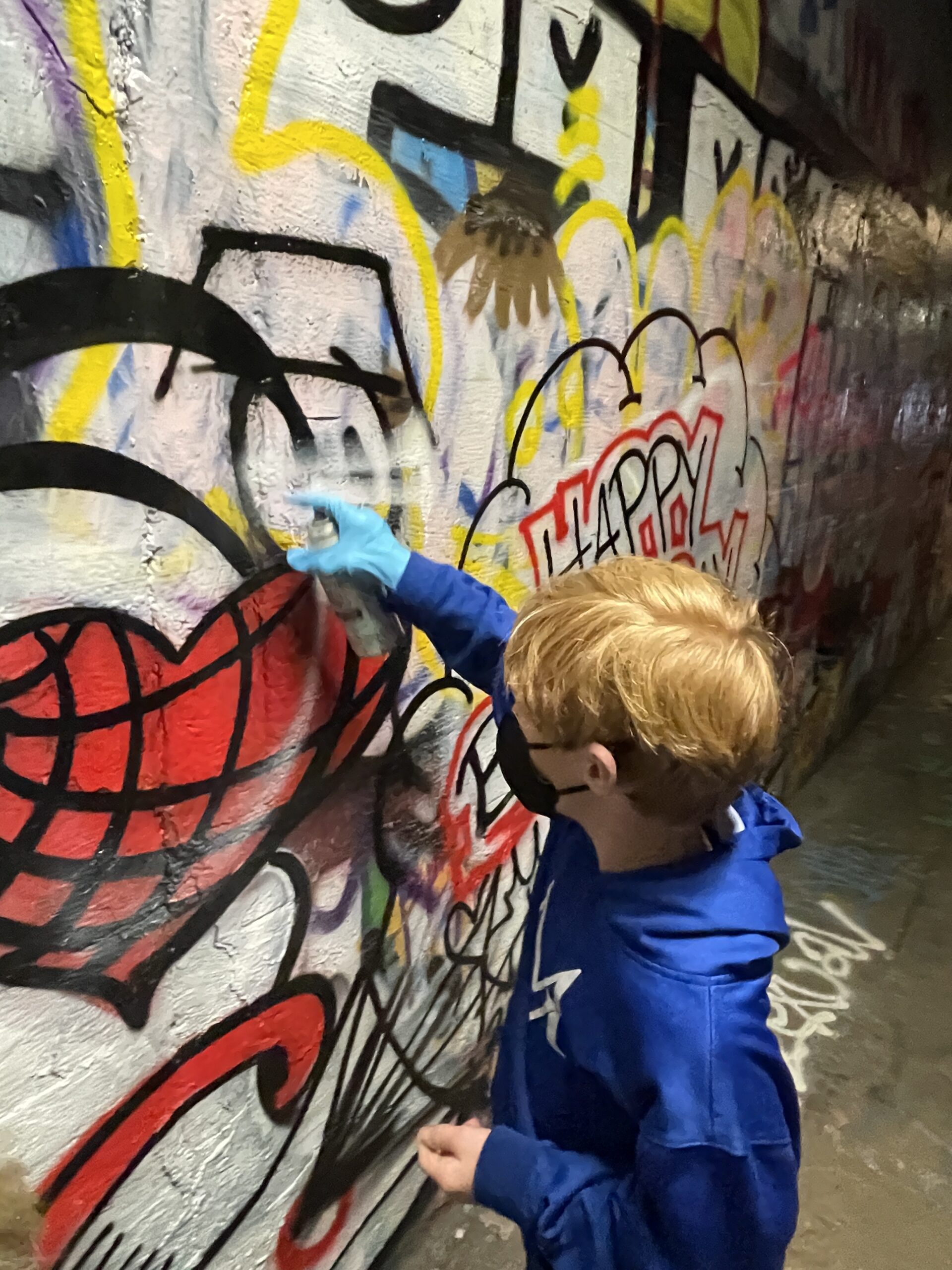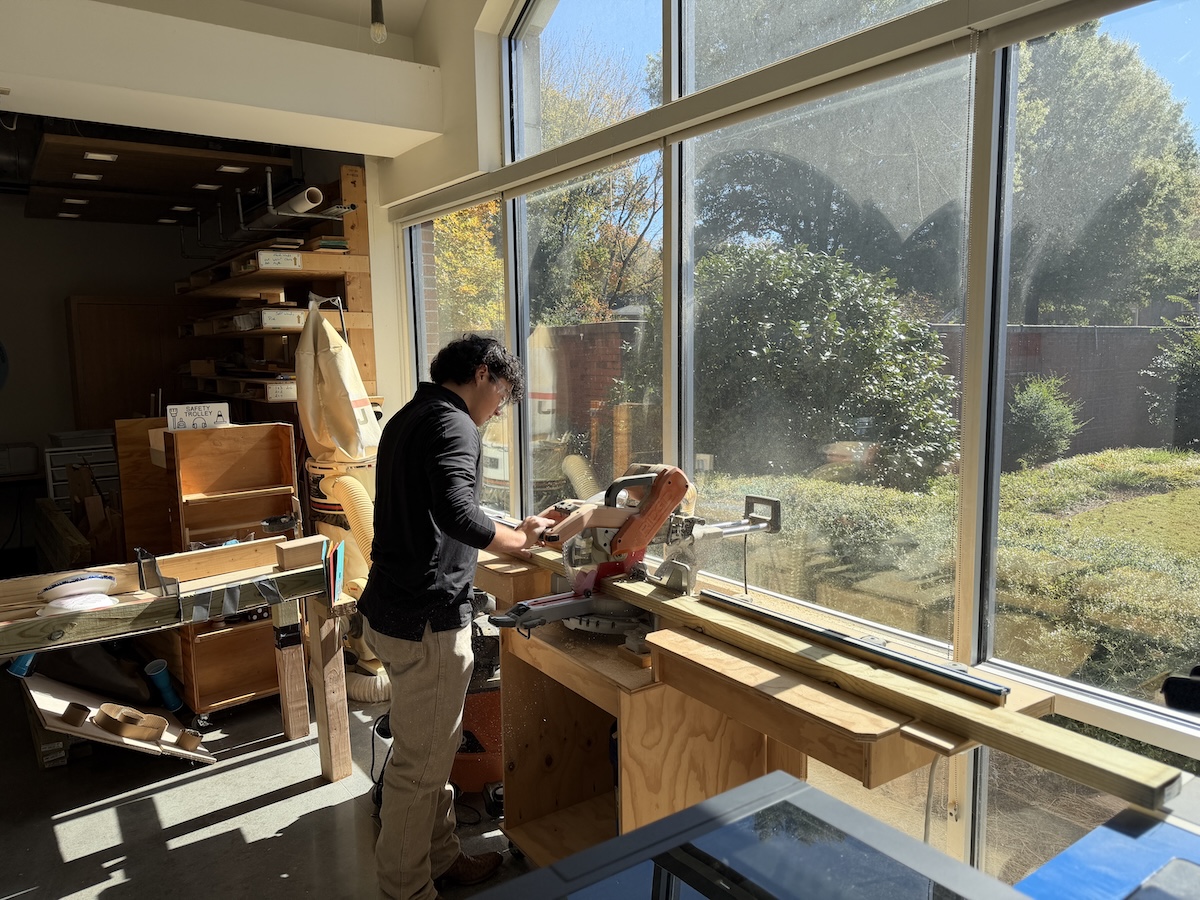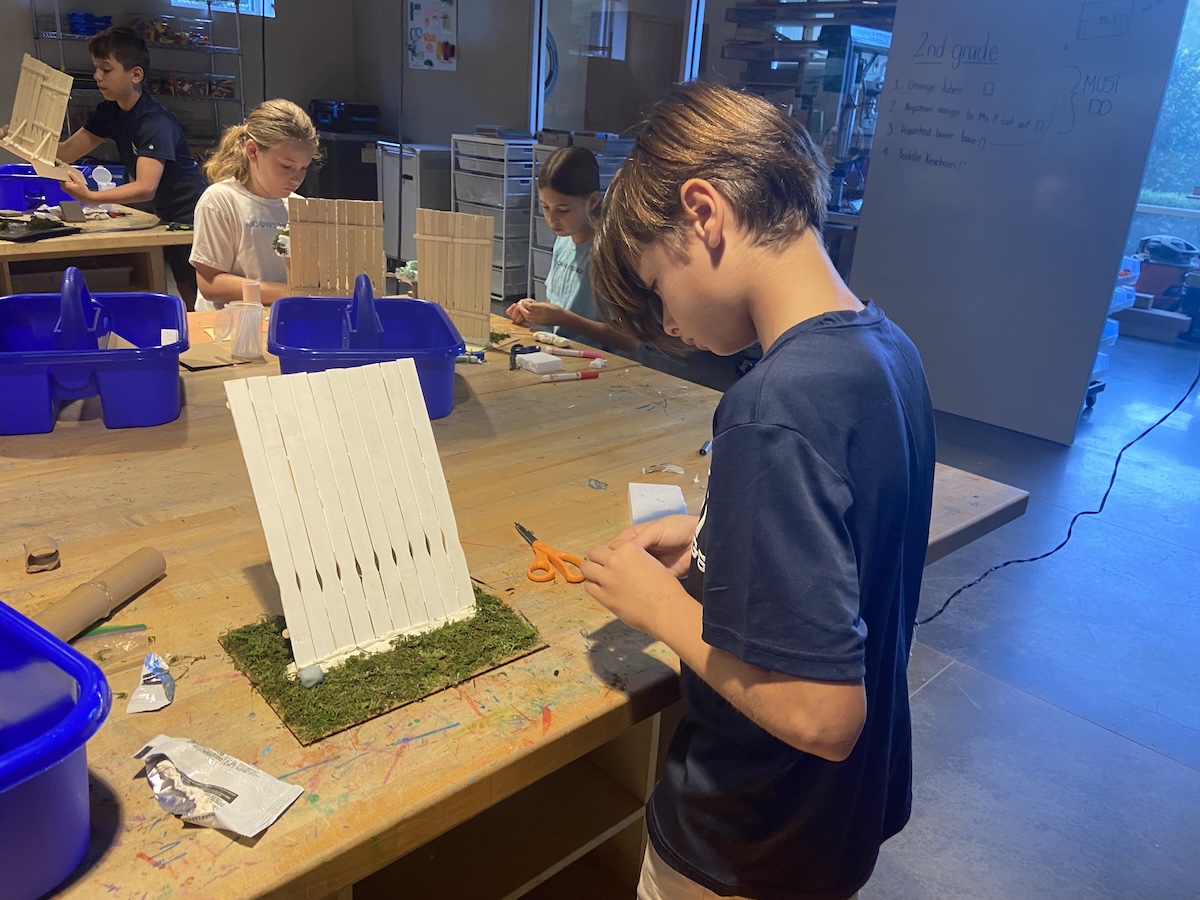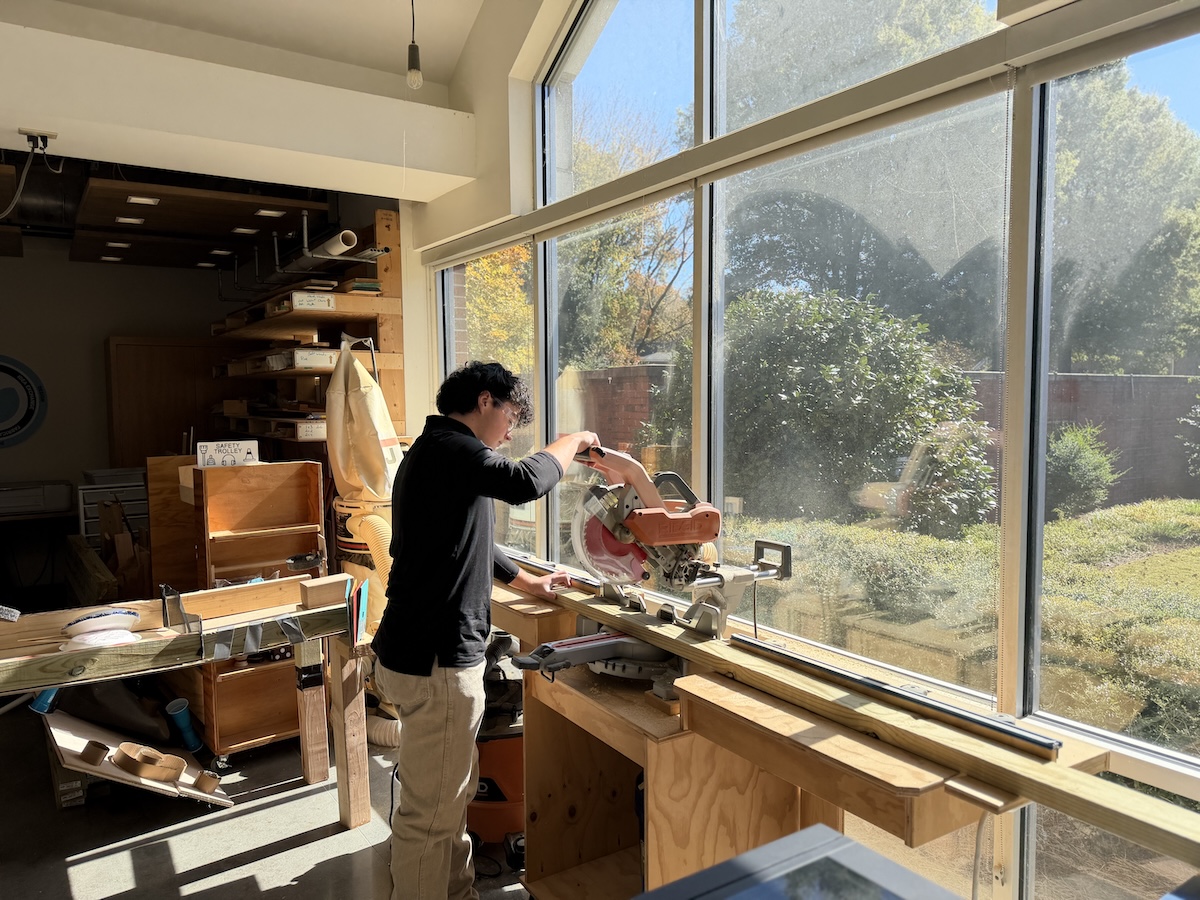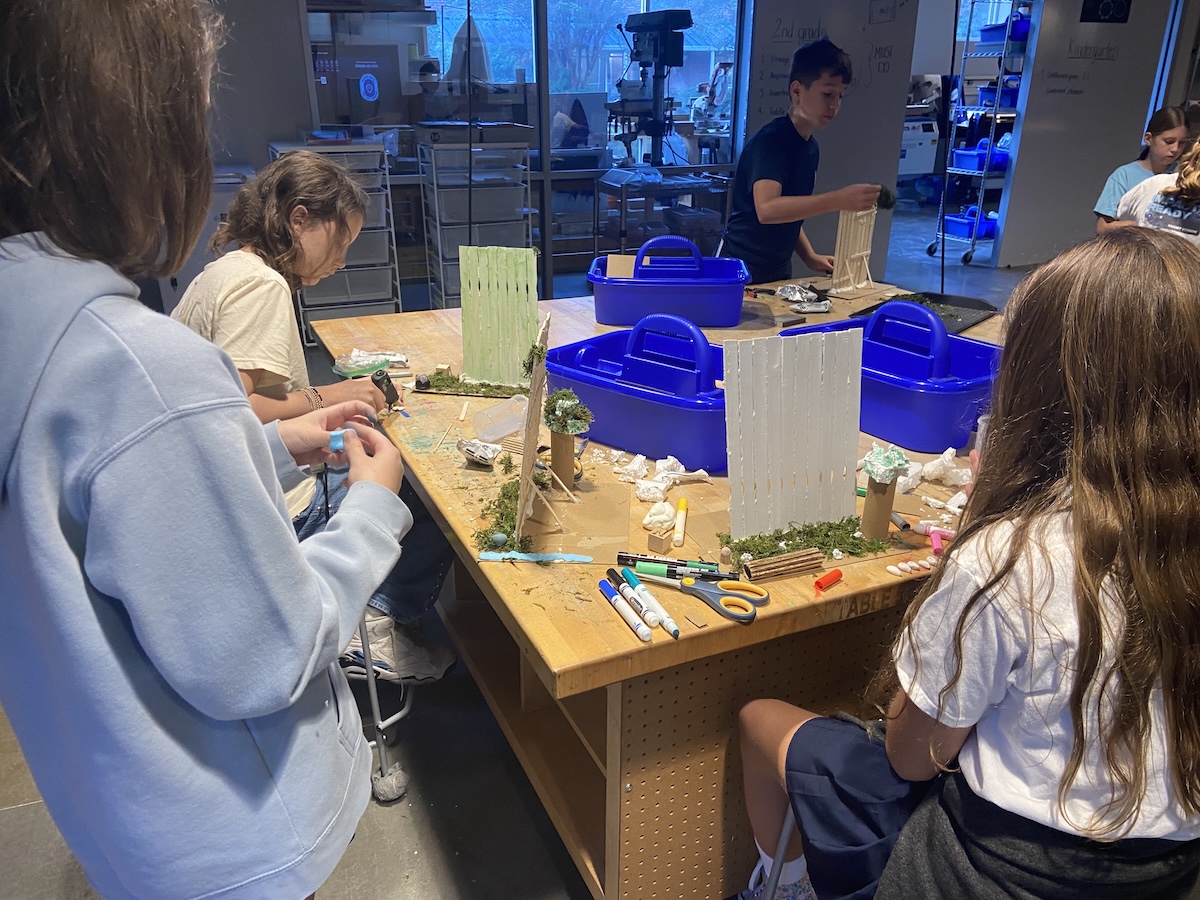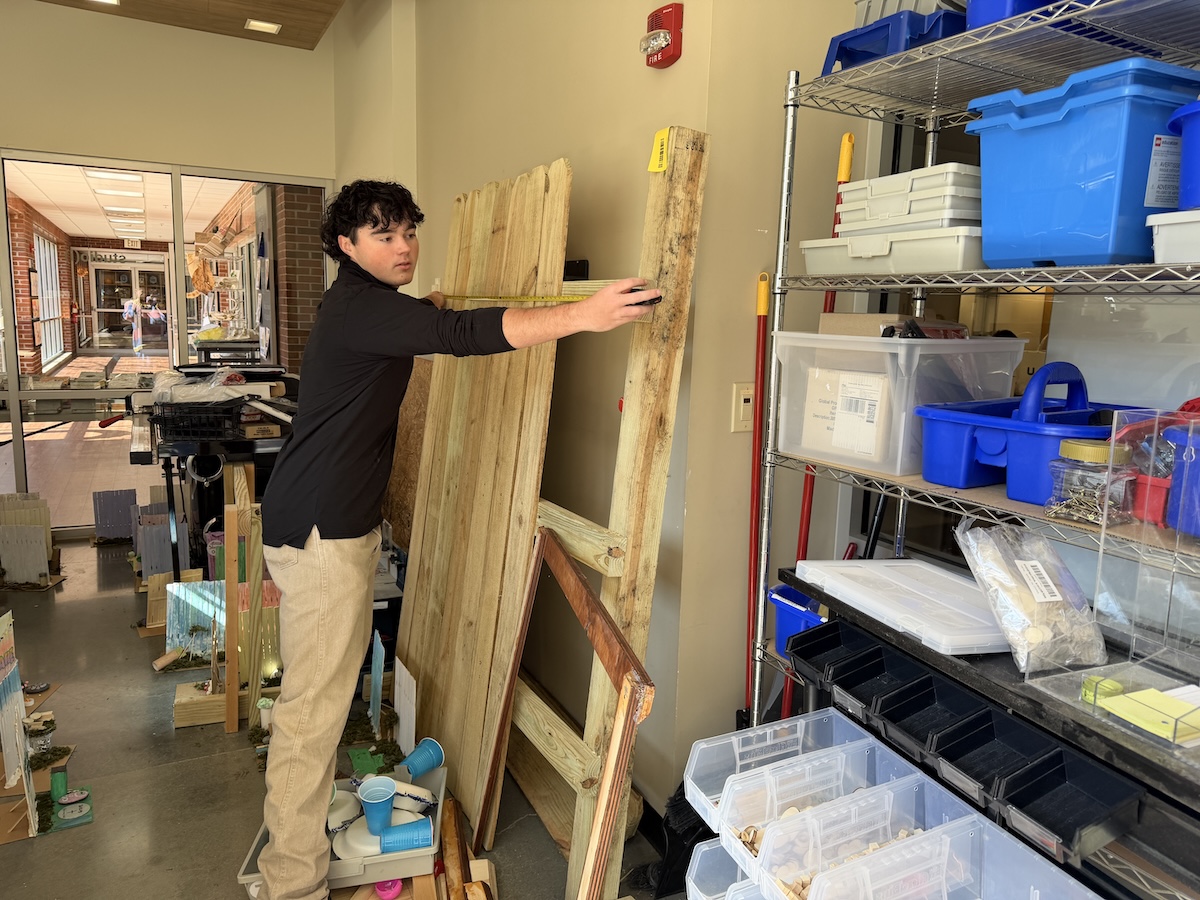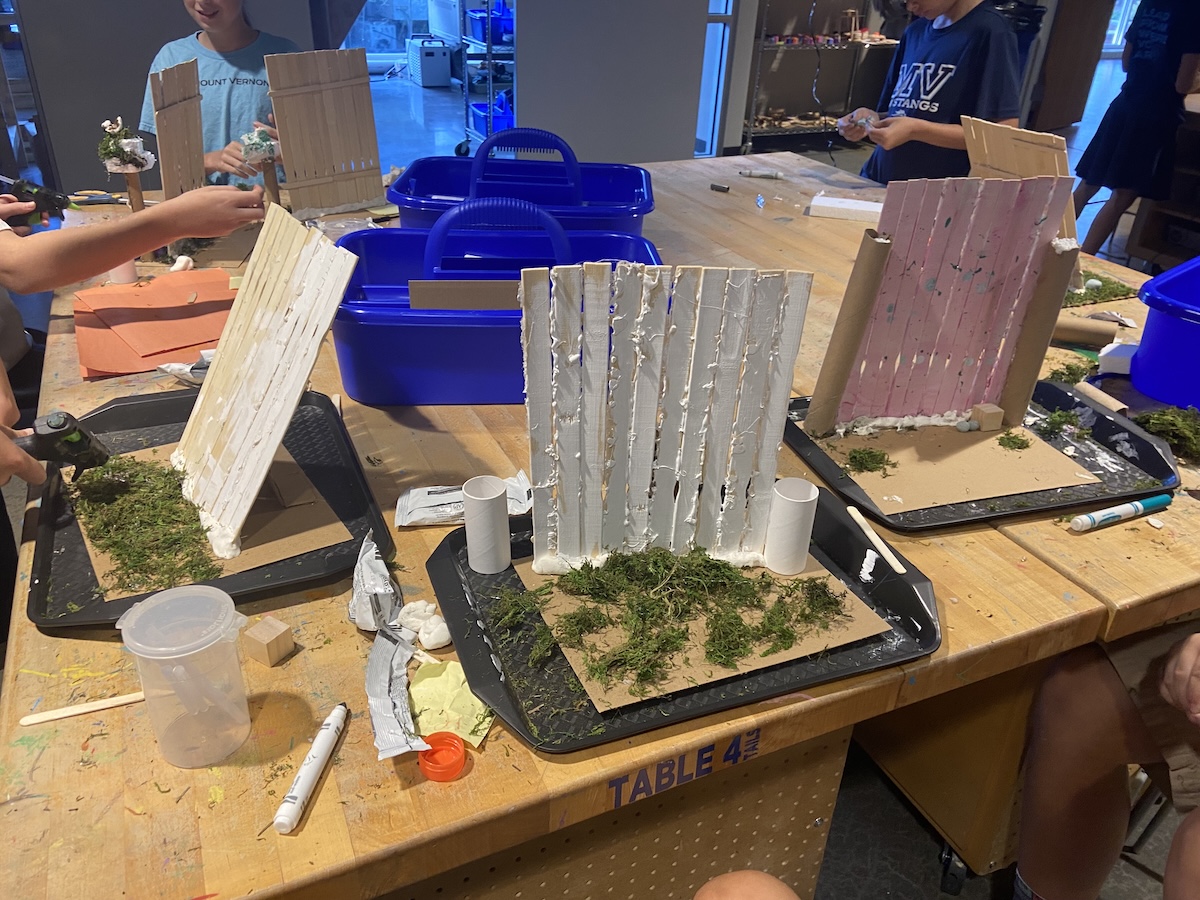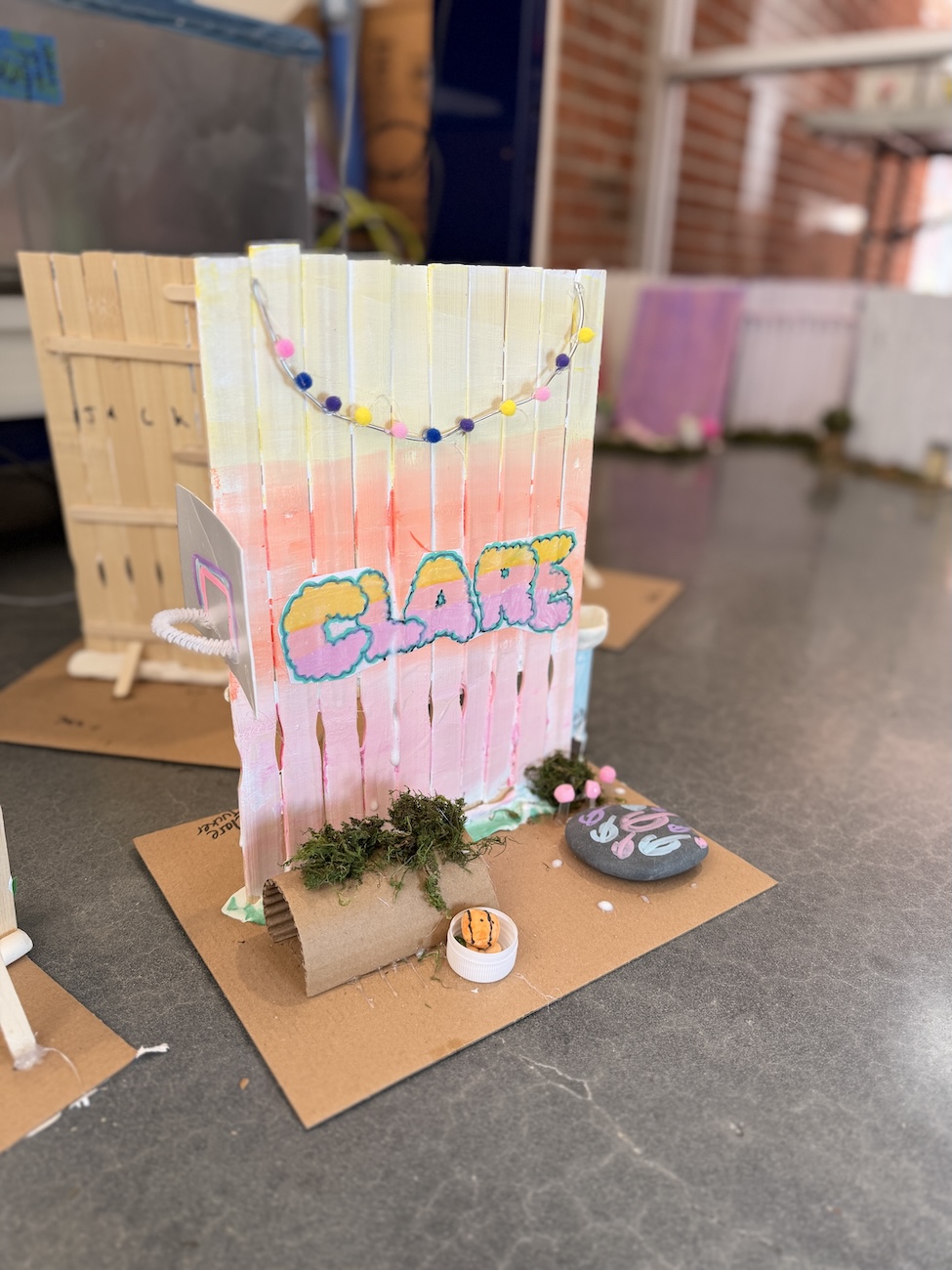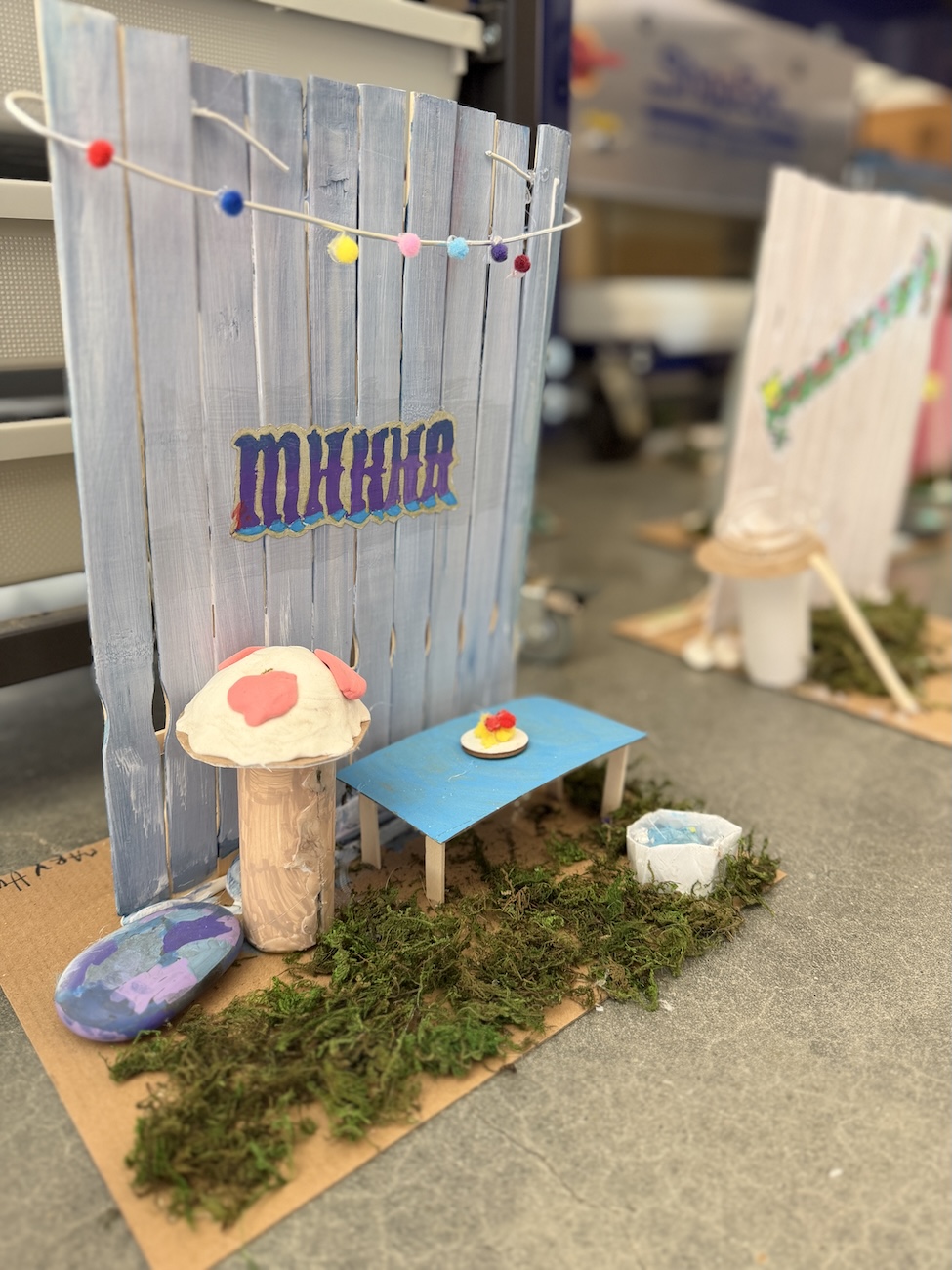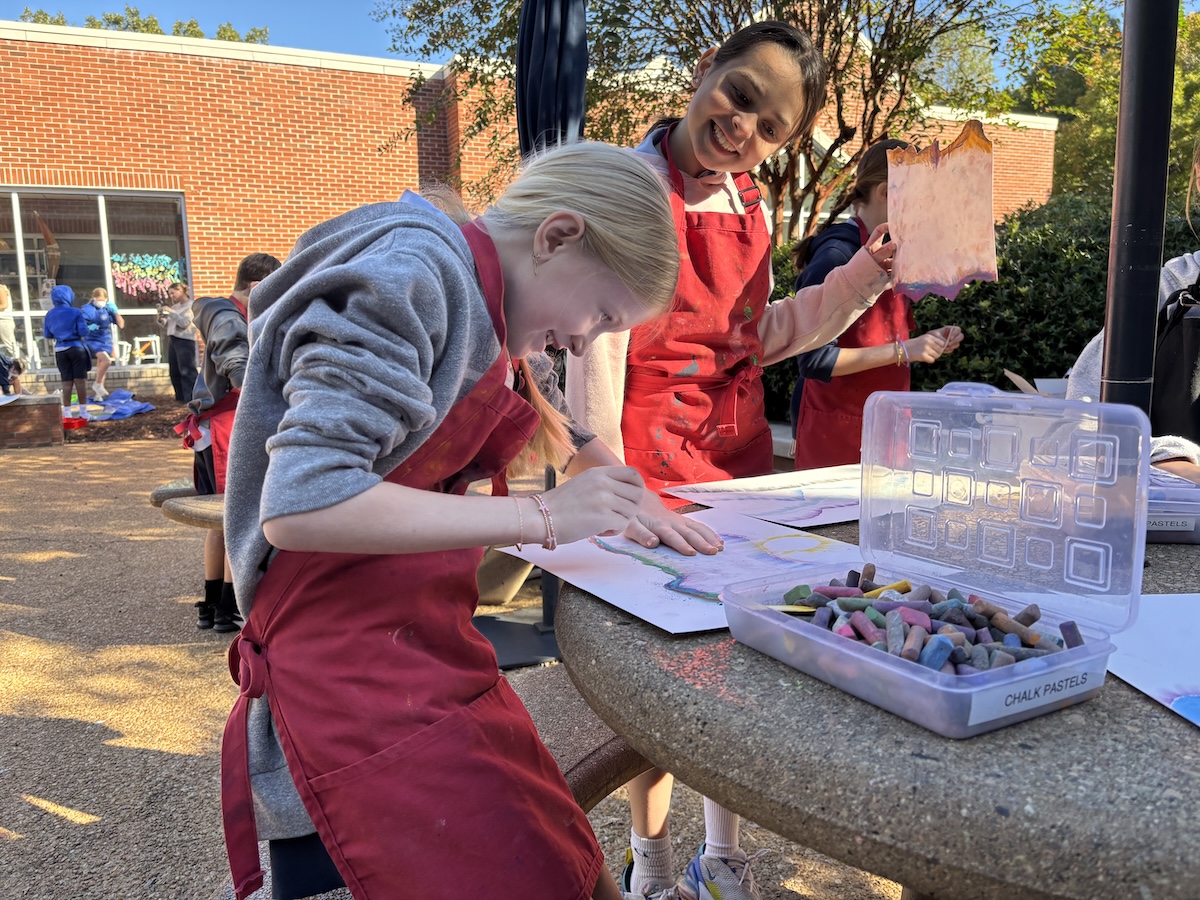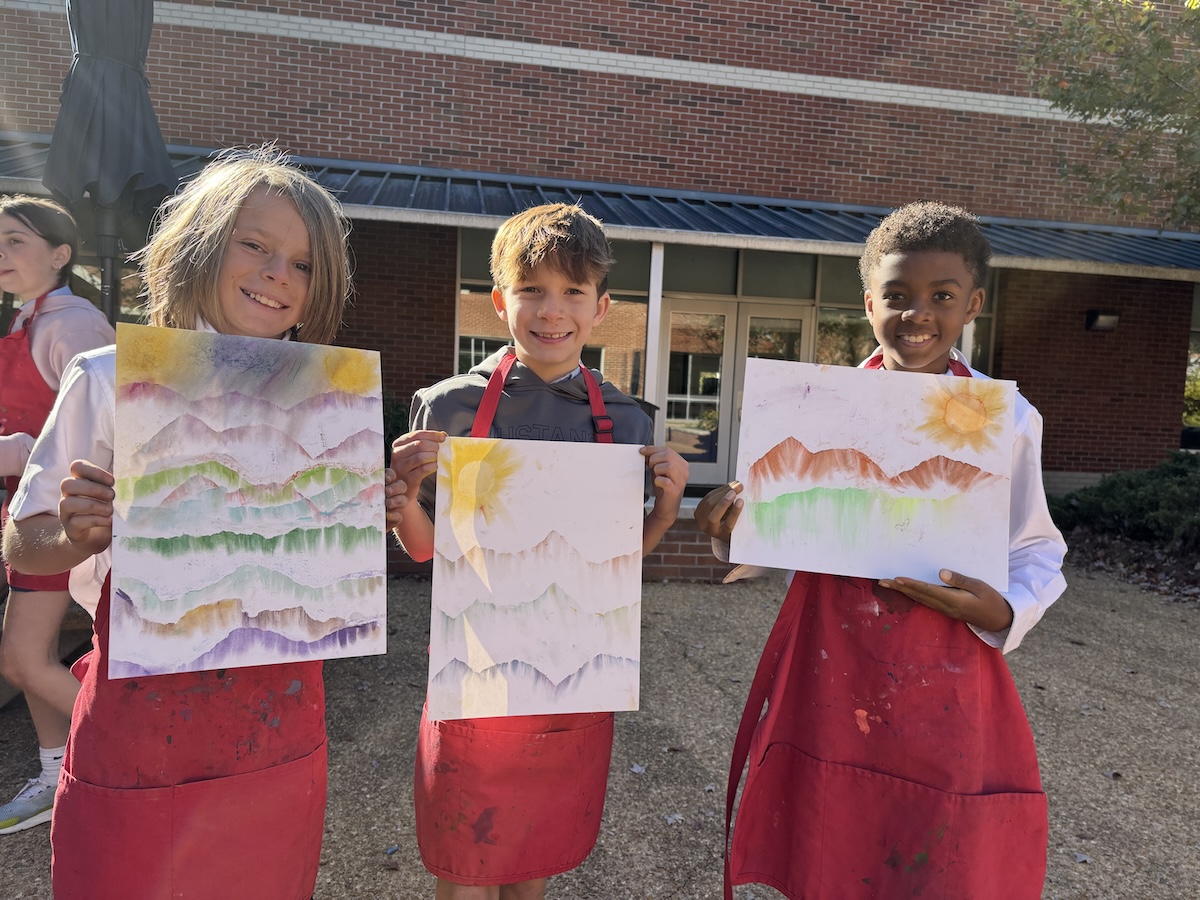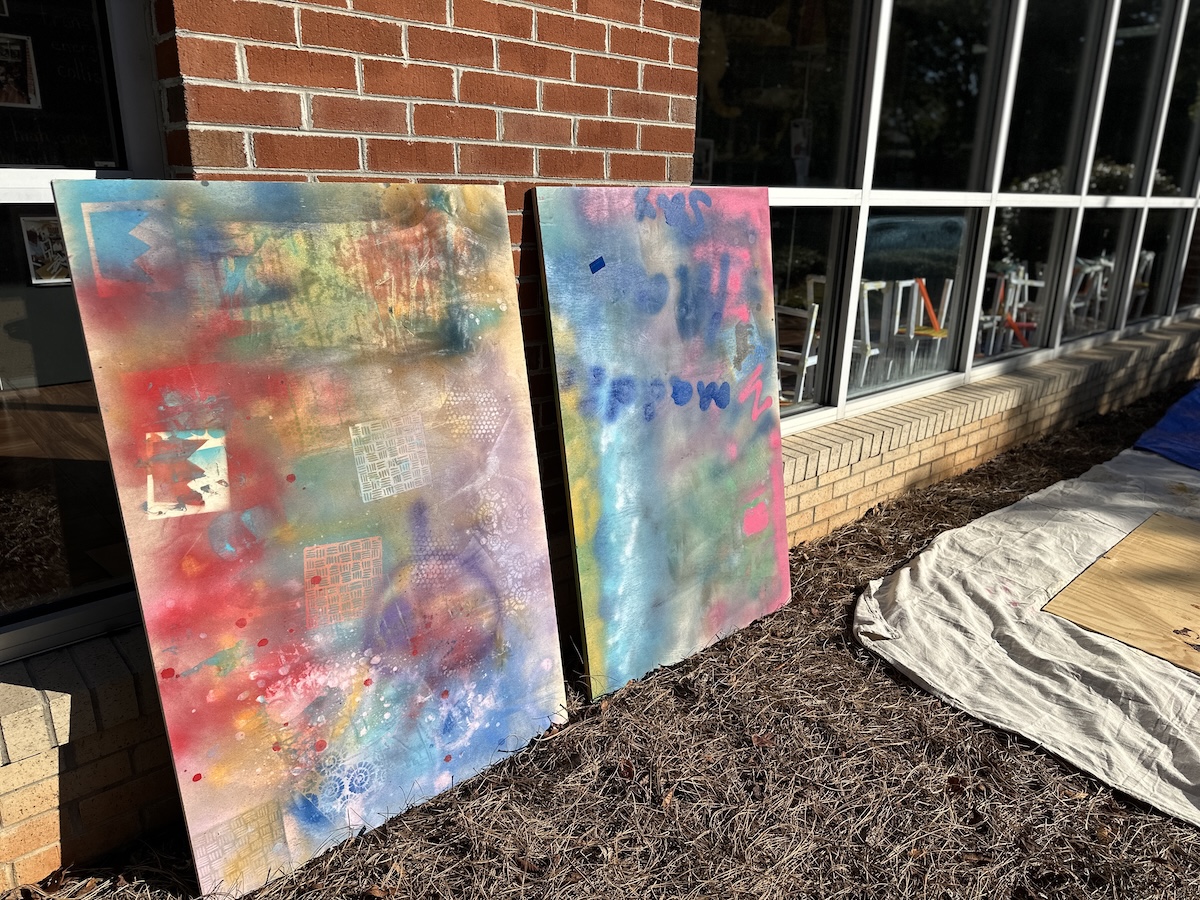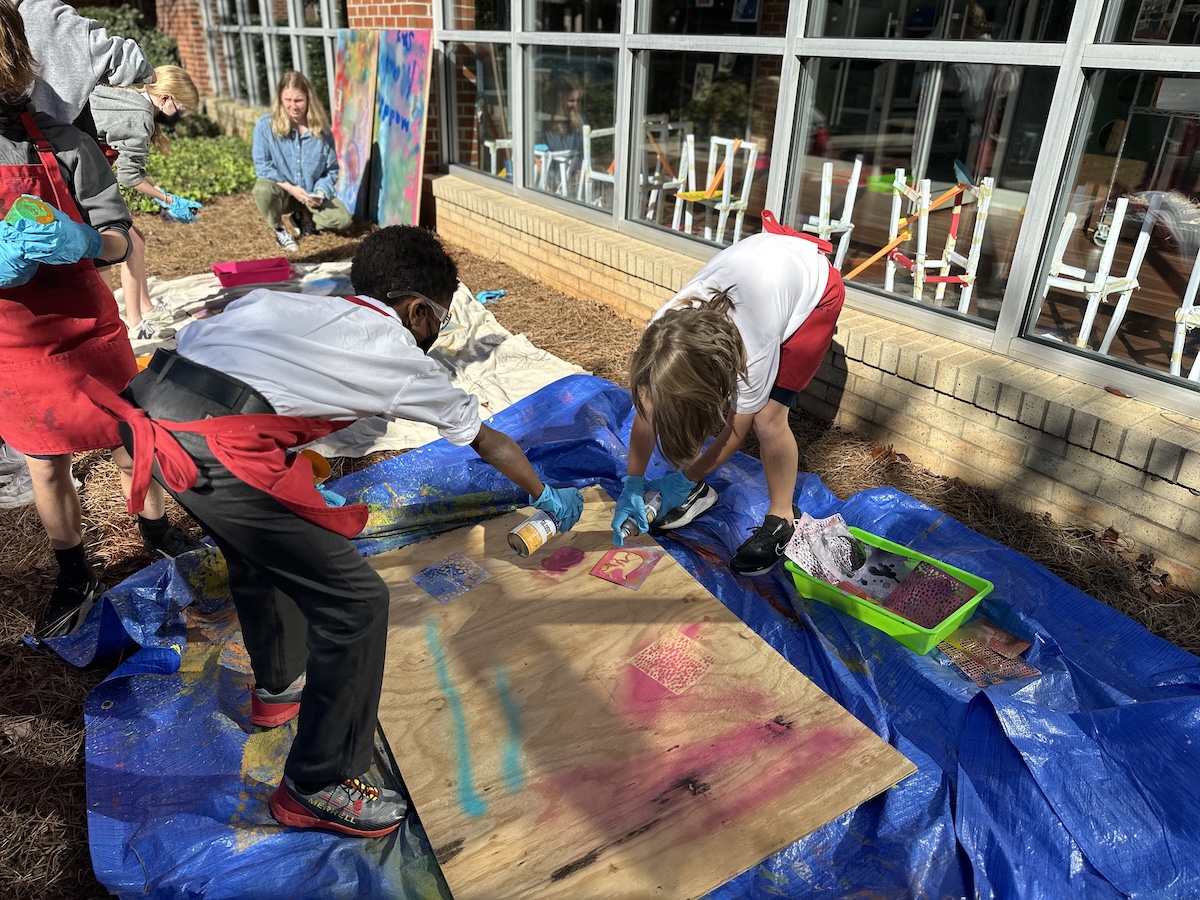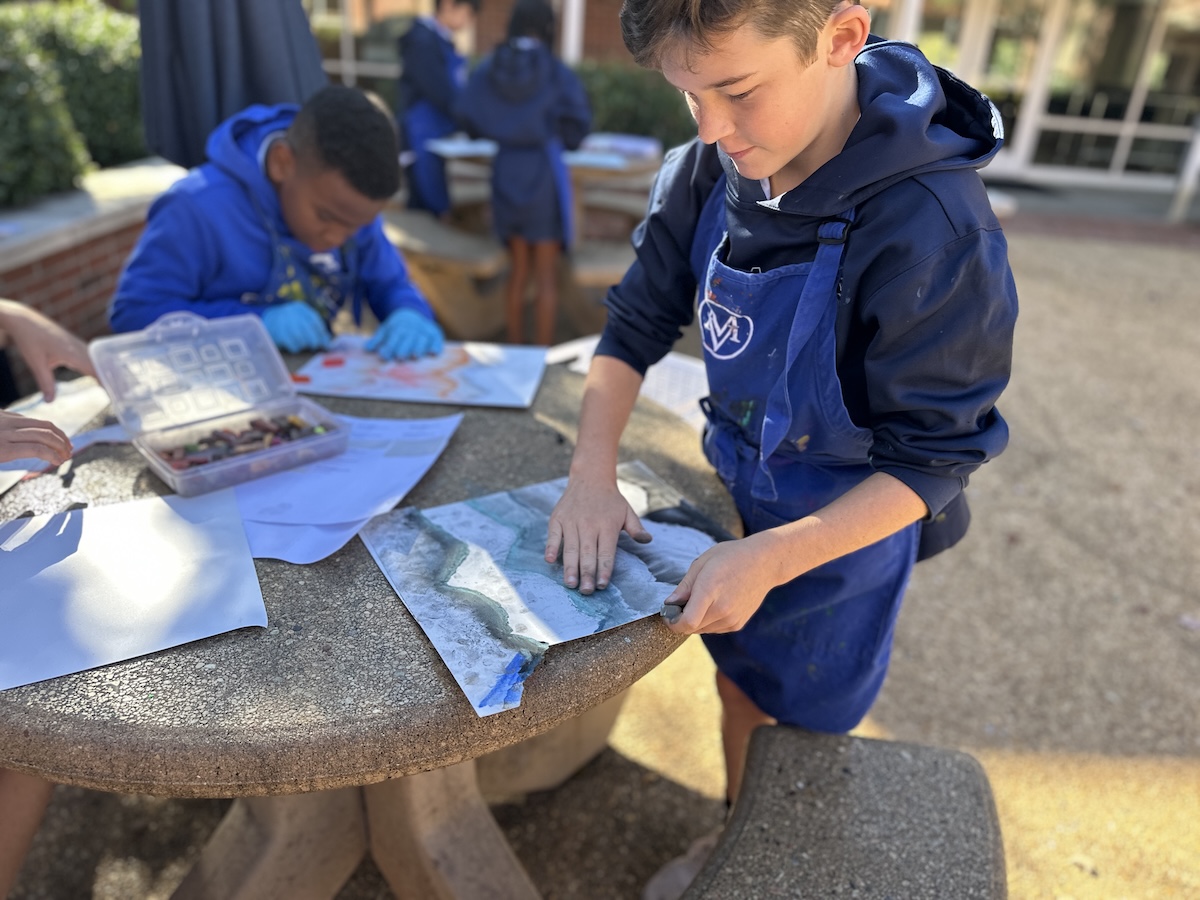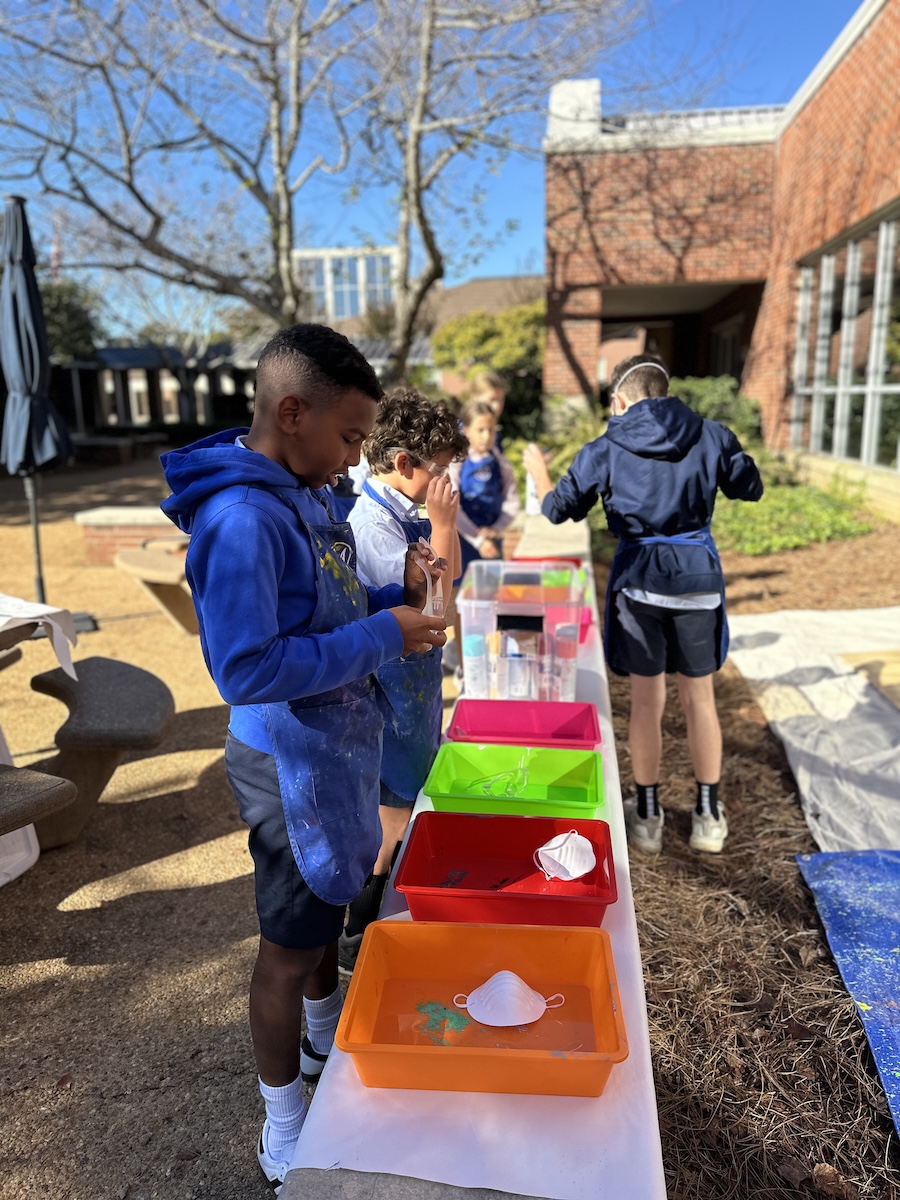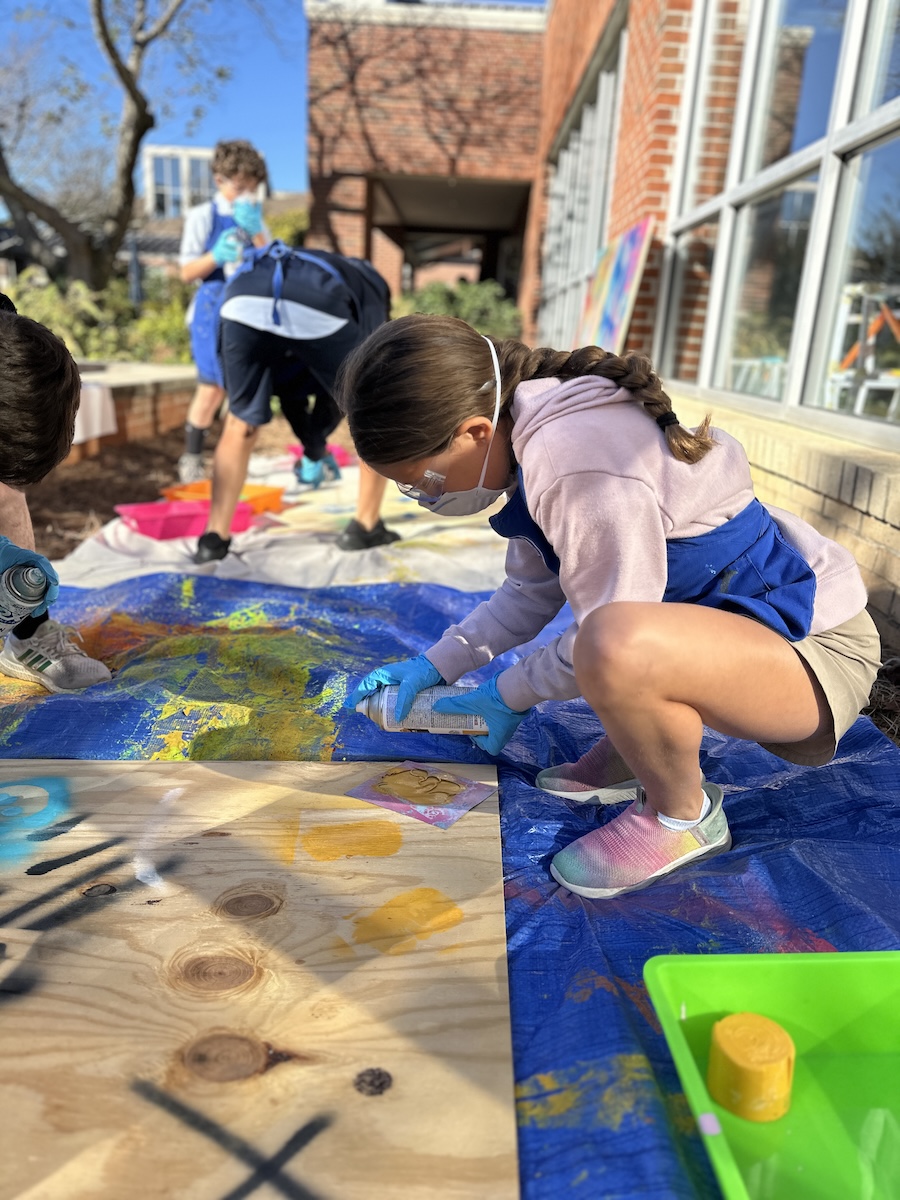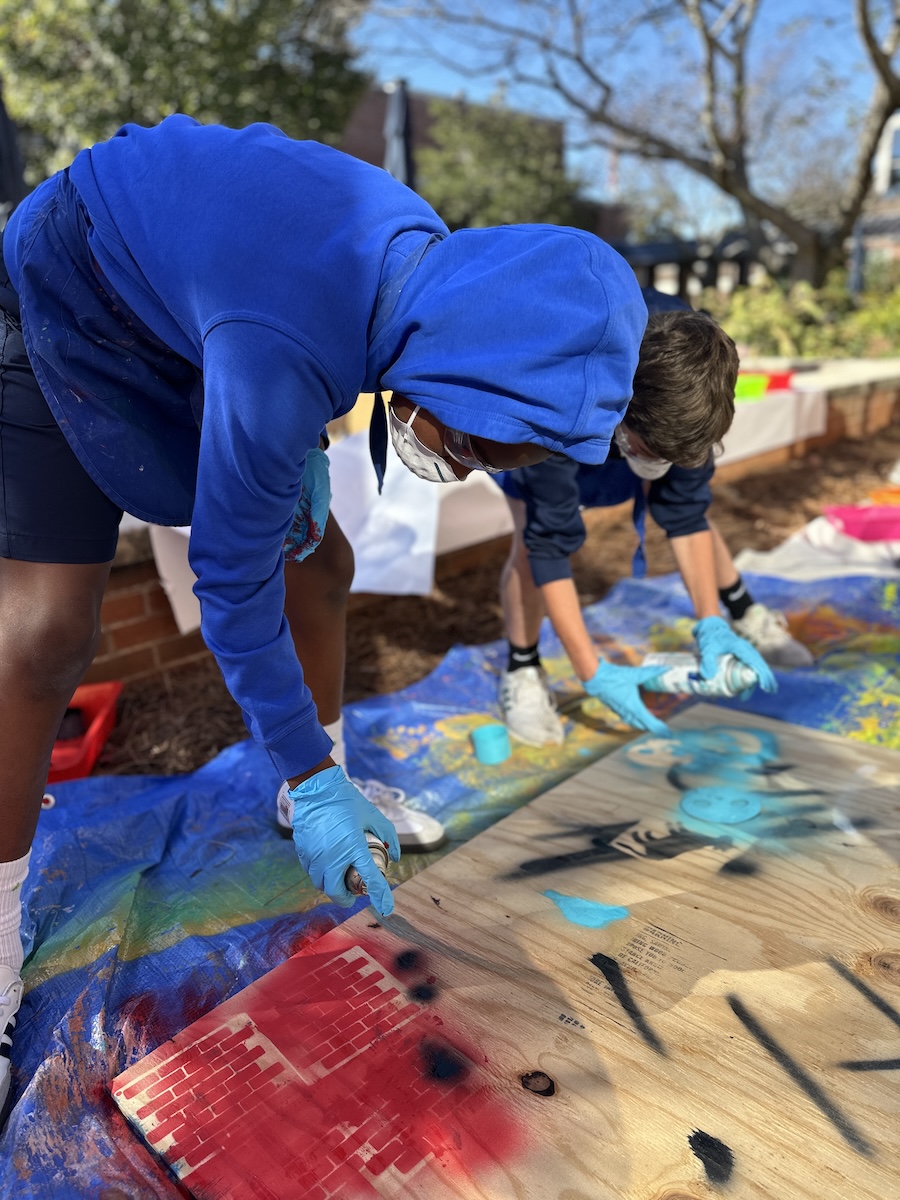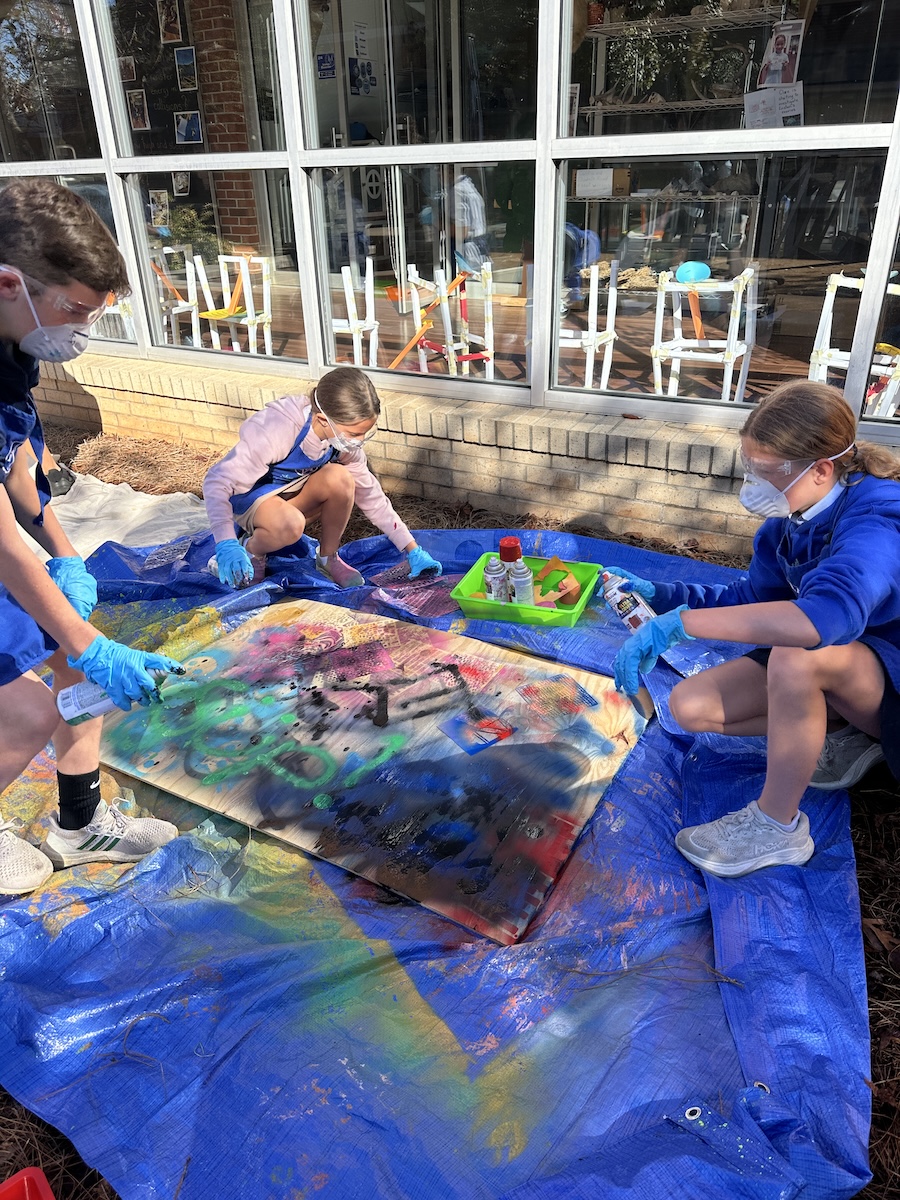Self Expression through Street Art
How do you capture the attention of fifth graders in their final year of Lower School? For Art Teacher Ms. Dianne Johnson, the answer was simple: create something bold, meaningful, and hands-on. Partnering with Ms. Tahtinen, Lower School Maker Teacher, they launched a multi-week Street Art and Maker Studio collaboration that transformed lessons on line, shape, and design into an exploration of creativity and community. Street Art includes murals, sculptures, installations, and graffiti. The Street Art Project challenged students to think critically about what defines art, the responsibility of the artist, and how creative expression can positively impact shared spaces.
“When I first mentioned graffiti [to the students], they said, ‘We’re not supposed to do that,’” Ms. Johnson explained. “That opened the door to talk about how artists can gain permission, earn commissions, and use their talents to beautify communities. It was a real-world lesson in ethics and creativity.”
Students studied the history of graffiti, from early tagging in Philadelphia to large-scale murals around Atlanta. They went on an expedition to the Krog Street Tunnel, one of the city’s most famous public art spaces. Equipped with gloves and spray paint, they practiced techniques firsthand while learning about legal street art and community responsibility.
“They were so excited to actually do something, not just observe,” said Ms. Johnson. “They practiced spraying and understanding what it means to create responsibly in a public space.”
In the Maker Studio, students built miniature fences, personal “canvases”, reflecting their style. Using wood, paint, and fairy lights, they applied art principles learned in class. To incorporate the study of Installation Art, Senior and Maker Intern Michael Fennelly constructed five full-size, five-by-six-foot fences for each fifth grade homeroom class. These fences will be decorated for the Christmas Showcase, and then painted over again at the end of the semester to tie in how Street Art can be temporary art and utilized as a way to communicate with their audience.
“Our guiding question was, how can we combine maker and art skills to design and create structures that showcase personal style?” said Ms. Tahtinen. “Every yard looked completely different the next day.”
Learning the Art behind the Art
Ms. Johnson guided students through lettering, outlining, contouring, and shading. They practiced bubble letters, studied line weights, composition, and dimension, and discovered how thickness and direction add energy and balance. “Many students wanted to draw freehand,” she said, “but moving from pencil to spray paint required adjustment. Working vertically instead of flat was a challenge, but a great moment of growth.”
Later lessons explored value and depth, teaching students to make letters “pop” using light and shadow. Students also experimented with technology, generating graffiti letterforms through an app and transferring designs to mini fences for a mixed media approach. Others created stencils with Cricut and laser machines, using acrylic and Mylar.
“If drawing wasn’t their strength, technology gave them another way to express their ideas,” Ms. Johnson said. “It’s about giving every student access to creativity in their own way.”
Learning by Doing
The project reinforced maker skills, sanding, painting, constructing, and iterating, while emphasizing responsibility. Students transformed gray rocks into art and designed yards reflecting their ideas and values.
“Usually, students want you to tell them exactly what to do,” said Ms. Tahtinen. “But when you give them the chance to figure it out, they surprise you. They’re more capable and creative than we sometimes imagine.”
Ms. Johnson agreed. “Once I gave them a little structure, they ran with it. They’ve filled sketchbooks, created stencils, and even asked to turn spray-painted shoes into wearable art. We were able to practice using spray-paint on plywood before heading on our expedition to the BeltLine so students could troubleshoot the painting techniques and design ideas. Their enthusiasm has completely surpassed my expectations.”
From Process to Purpose
The Street Art Project will continue through December, culminating in a showcase that highlights both individual creativity and collective effort. By blending art and maker education, this collaboration demonstrates how contextual, hands-on learning equips students to explore, design, and contribute with purpose.
“The best part,” said Ms. Tahtinen, “is that the students taught us as much as we taught them. When you give them the chance to create and think critically, they’ll always rise to it.”
